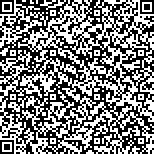下载中心
优秀审稿专家
优秀论文
相关链接
摘要

地震是一种会造成人类生命财产重大损失的突发性自然灾害,震后第一时间启动应急响应并开展灾情的快速评估能有效地减轻地震灾害带来的破坏。空间对地观测技术为宏观性的地震应急与调查工作提供了便捷、经济的途径,随着空间对地观测技术与数据处理技术的不断发展,各国学者对遥感应急调查开展了大量深入的研究工作,相关研究成果已广泛地应用于地震应急的实际工作中。但是,遥感数据类型与处理技术的多样化也带来了应急信息的散乱,导致遥感快速应急响应系统性不强,使得应急服务不持续,一定程度上限制了遥感技术的效能;为此,针对现阶段遥感技术在地震应急调查中的应用情况,在总结地震应急调查常用遥感技术手段的基础上,分析了遥感快速应急响应面临的技术挑战,重点梳理了地震应急不同阶段对遥感数据及应急专题产品产出类型与时效性的现实需求,结合震后灾区影像数据的情况,系统地分析了光学、雷达、激光雷达遥感技术在地震应急调查应用中的技术现状与存在的问题。在实际地震应用案例分析的基础,总结剖析遥感应急工作存在的问题,并重点从海量数据快速处理、震害信息智能化提取、多源数据协同分析3个技术层面论述了遥感地震应急面临的核心困难,基于此,结合在轨数据实时、海量数据快速处理就灾情智能化识别的多技术联合、多源数据协同分析、发展敏捷卫星等几个方面论述了未来遥感技术在防震减灾中的发展趋势,以期推动遥感监测手段提供动态、实时、持续的空间信息应急服务能力,提高地震应急工作的快速响应、精细化与业务化应用能力。本文的研究可以为多源遥感技术在地震应急调查中的科研及业务应用提供很好的参考,更高效的发挥遥感技术在防震减灾工作中的应用能力与水平。
Earthquakes are sudden natural disasters that cause great loss of human life and property. However, starting an emergency response and carrying out rapid assessment of the disaster situation during the first few moments after an earthquake can effectively reduce the damage caused by the earthquake. Space Earth Observation Technology plays an important role in earthquake emergency because of its macro, fast, and wide coverage. With the continuous development of space earth observation technology and data processing technology, scholars worldwide have conducted several in-depth research on the extraction of earthquake damage information in the remote sensing emergency process. However, in actual emergency operations, a universal workflow does not exist. To promote in-depth and real operational efficiency of remote sensing earthquake emergency work, the problems in remote sensing emergency work are analyzed, and the future development trend of remote sensing earthquake emergency is put forward, so as to make the application of remote sensing technology in earthquake prevention and disaster reduction efficient. The timeliness of remote sensing emergency to a certain extent affects the efficiency and accuracy of decision-making that is vital in emergency assistance. At different stages of a disaster, the demand for remote sensing images, such as spatial resolution and time resolution, varies. In view of the application of remote sensing technology in earthquake emergency investigation, we analyze the application of remote sensing technology in the process of earthquake emergency by means of a literature review. According to the classification of optical remote sensing image and SAR image, we analyze and introduce the methods of earthquake damage information investigation using different type of remote sensing images, such as supervision classification, change detection, and depth learning.In the recognition of earthquake damage information, high-resolution optical remote sensing images usually only use their spectral features, ignoring the application of spatial distribution features and geometric features. Traditional pixel based classification methods are easy to contain salt and pepper effect in the classification results, so it is necessary to develop object-based multi feature knowledge driven classification technology on this basis. Therefore, the method of combining object-oriented analysis and knowledge integration will become the mainstream method of earthquake disaster extraction and evaluation in the future. For SAR images, the seismic damage evaluation of single temporal SAR images mainly focuses on the average seismic damage evaluation in blocks, and there is less research on the imaging mechanism, feature performance and information extraction of single buildings. After the earthquake, the earthquake damage targets are complex and diverse. In order to fully realize the automatic extraction of earthquake damage targets based on remote sensing images, it still needs the continuous improvement and development of the algorithm.Traditional change detection methods are mainly aimed at the same type of sensors. The effective combination and interactive utilization of remote sensing image data from different sources is also the development trend in the future. The characteristic information of earthquake damage targets with different degrees of earthquake damage in remote sensing images is also different. The feature-based object-oriented change detection method can make full use of the feature information of the image and effectively improve the accuracy of seismic damage identification. Therefore, the focus of multi temporal image change detection is the effective application of spatial features in object level change detection.We then summarize the existing problems and discuss the main difficulties faced by remote sensing earthquake emergency and the solutions from three aspects. Combined with real-time orbit data and practical work, the paper analyzes the future development trend of remote sensing technology in earthquake prevention and disaster reduction from the aspects of multi-technology combination of intelligent disaster identification, multi-source data collaborative analysis, and development of agile satellite. Through this approach, we promote remote sensing monitoring means to provide dynamic, real-time, and continuous space information emergency service, and improve the rapid development of earthquake emergency work response, refinement, and business application. This research can provide a good reference for the scientific research and business application of multi-source remote sensing technology in earthquake emergency investigation, and give more efficient play to the applicability and level of remote sensing technology in earthquake prevention and disaster reduction.

